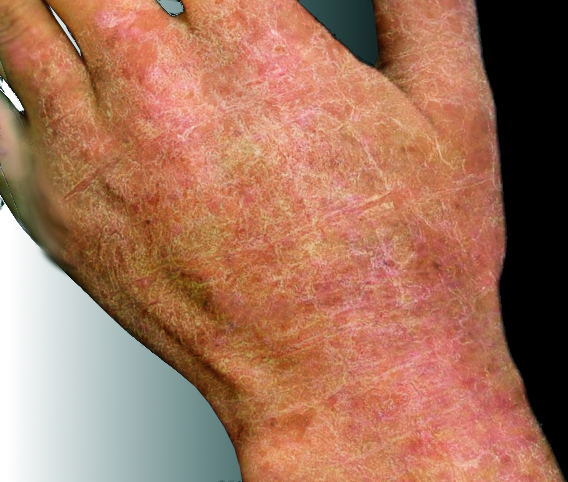Definition/Introduction
Basic skin lesions divide into primary, secondary, and special types. The term lichenification is classed as a secondary skin lesion wherein the characteristic features of skin thickening, hyperpigmentation, and exaggerated skin lines are noted. Lichenification can be further divided into primary and secondary types wherein primary lichenification signifies lichen simplex chronicus, also known as neurodermatitis circumscripta. On the other hand, secondary lichenification occurs in atopic dermatitis, infective eczematous dermatoses, psoriasis, psoriasiform dermatosis, xerosis, pityriasis rubra pilaris, porokeratosis, vegetative growths, anxiety, and obsessive-compulsive disorders.[1][2][3]
The lesions start as hyperpigmentation on a flat skin surface that is followed by the appearance of multiple small papules, termed pseudopapules, giving the lesion a pebbly appearance. The next is thickening or induration of the deep layers of the skin that does not involve the skin creases and thereby imparts the rather characteristic exaggeration of skin markings. Lesions appear as ill-defined except for certain cases of secondary lichenification.[4][5]
Owing to the inciting factor of chronic rubbing, lichenification often occurs in easily accessible sites such as the nape of the neck, wrists, hands, forearms, waist, scrotum, vulva, thighs, lower legs and dorsa of feet.[6] Certain cases are known to occur in the lower eyelids, postauricular area, axillae, and popliteal fossae.[7][8]
Diffuse types of lichenification have been described wherein involvement of the face, neck, chest, abdomen, flanks, arms, forearms, thighs and lower legs appear as ill-defined plaques ranging from hyperpigmented patches, numerous flat-topped papules, and indurated plaques may present symmetrically with extremity involvement.[9][10]


